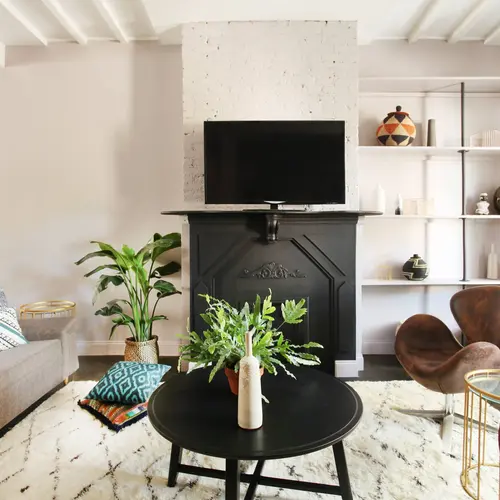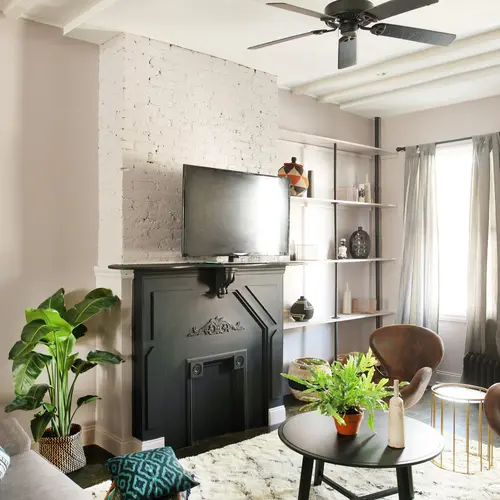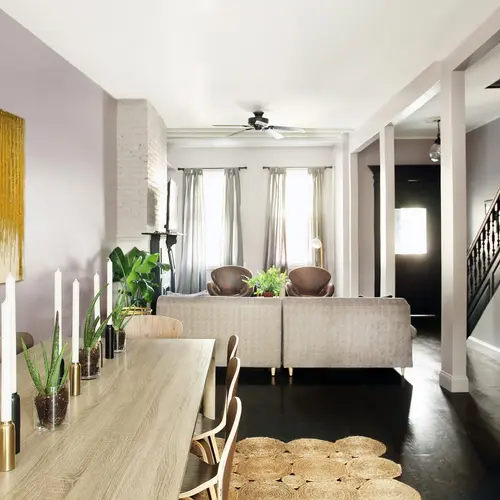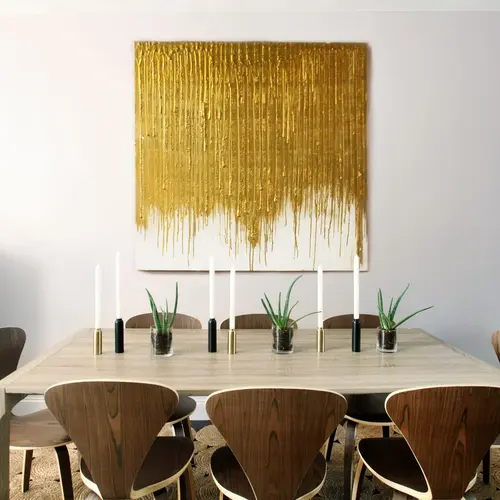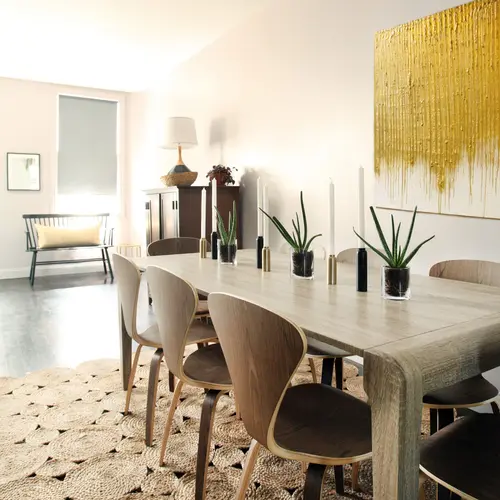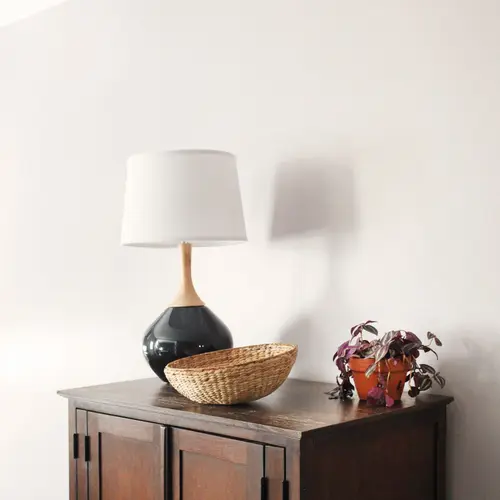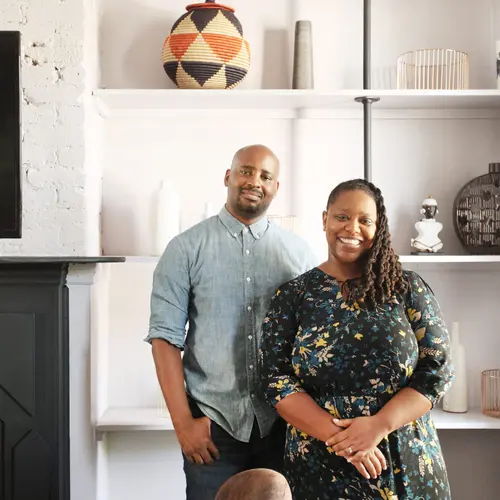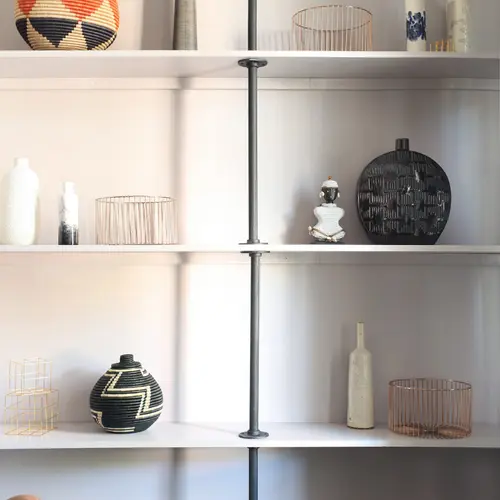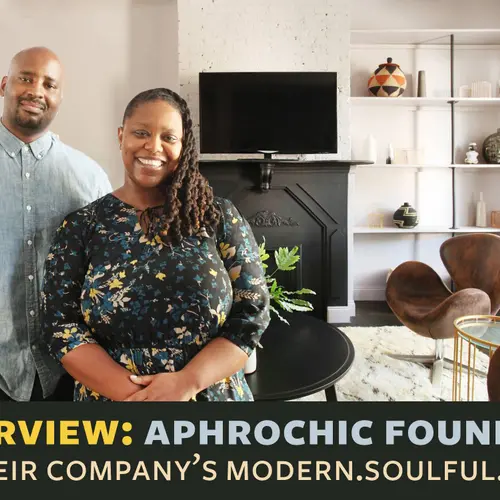INTERVIEW: AphroChic’s founders pursue a passion for storytelling, design, and African American history
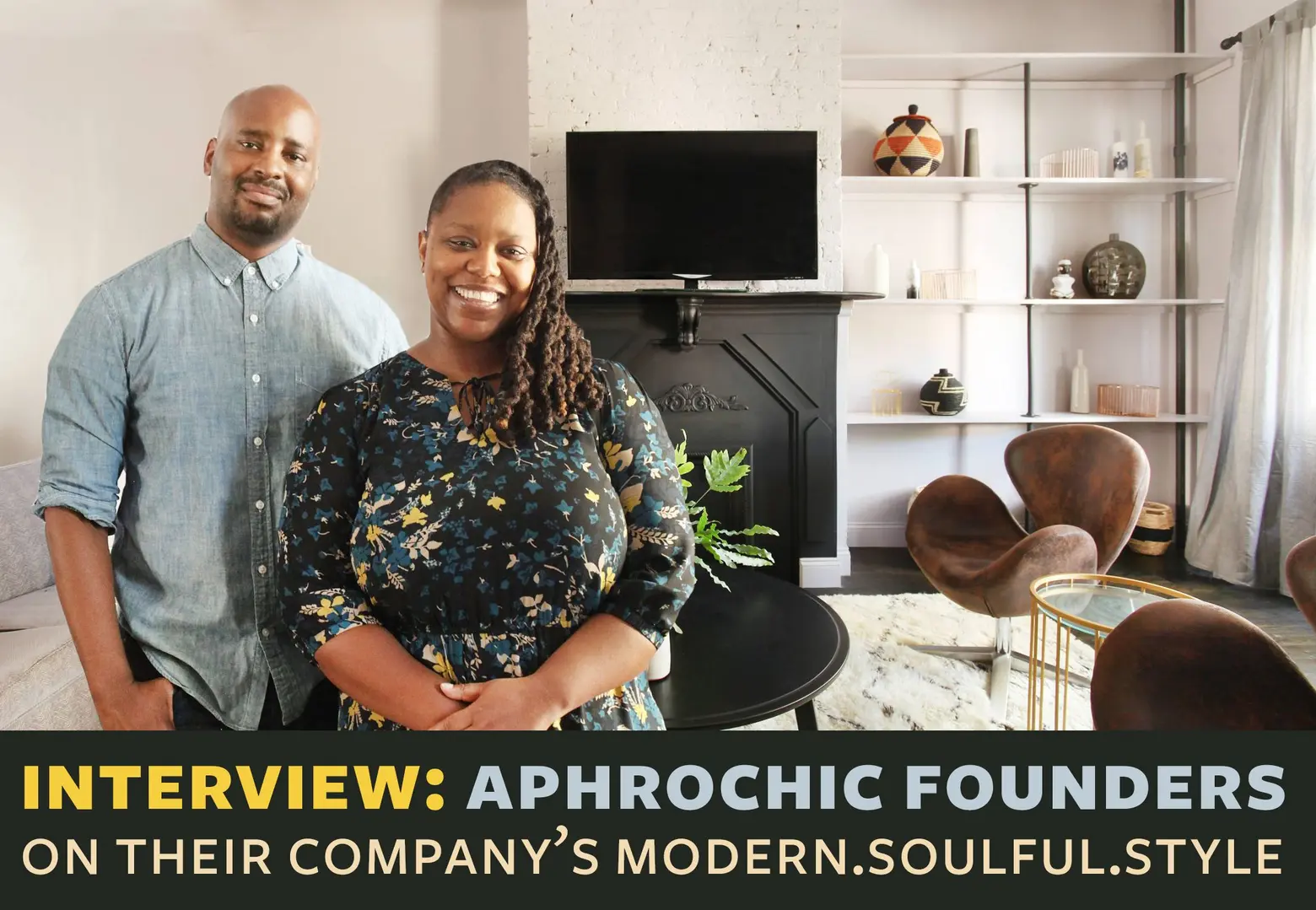
Photos © AphroChic/Patrick Cline
Photos © AphroChic/Patrick Cline
“Modern.Soulful.Style.” This is the term coined by Crown Heights-based husband-and-wife team Jeanine Hays and Bryan Mason when they started their home design blog AphroChic in 2007. These three little words really must have resonated; just over a decade later, Jeanine and Bryan have taken the design world by storm, starting their own product line (which includes their “Brooklyn in Color” paint collection, the first paint line by an African-American design brand), designing interiors, authoring the book “REMIX: Decorating with Culture, Objects and Soul,” and hosting HGTV’s “Sneak Peek with AphroChic.”
6sqft recently chatted with Jeanine and Bryan to learn how they went from careers in criminal justice to interior design, how African American influences factor into their work, and what’s to come from this unique couple who “embraces culture and the unique admixture of the traditional and the contemporary that helps to define us all.”
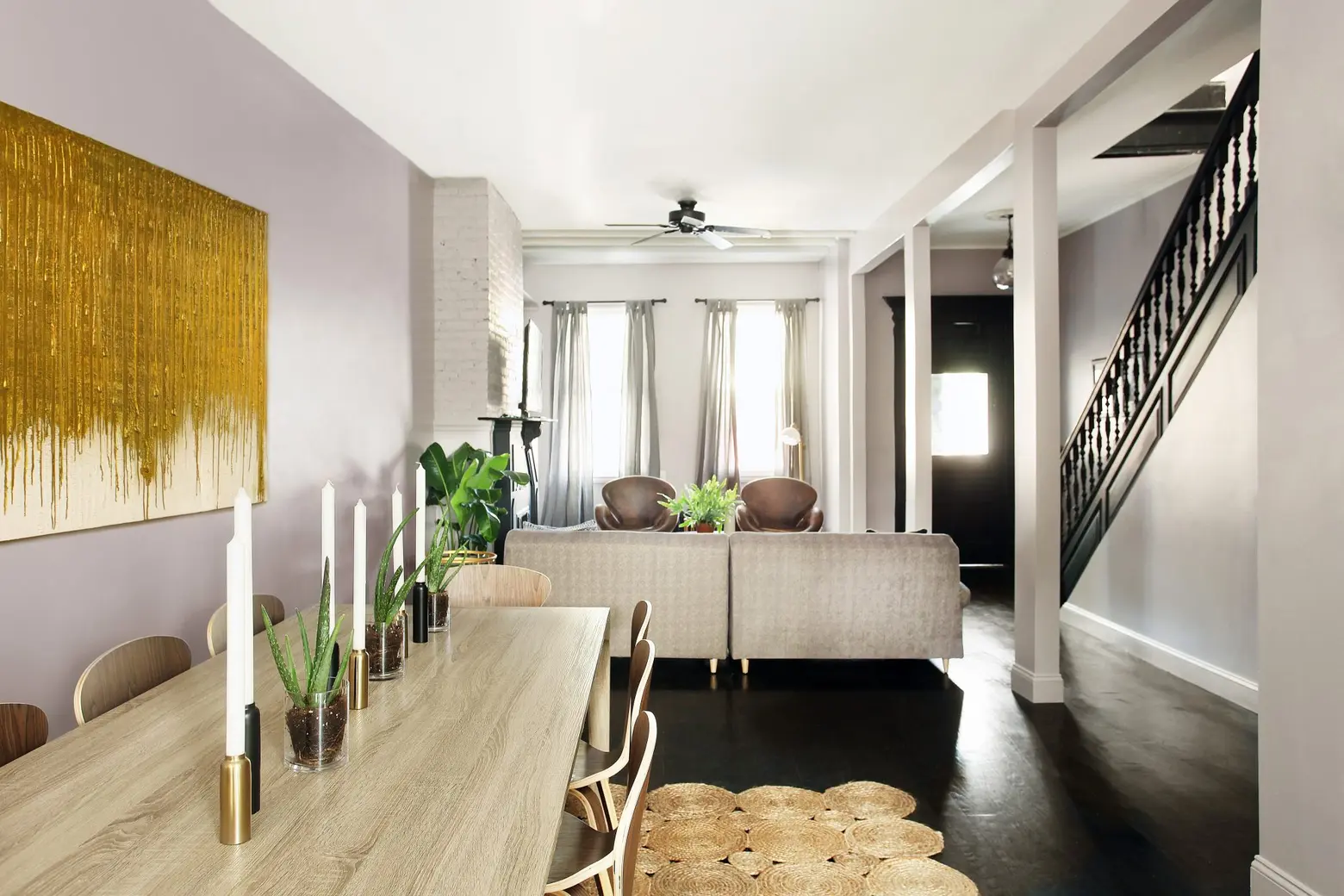
Both of you had very different careers prior to starting your company, so how did you come to start AphroChic?
Bryan Mason: That’s right, Jeanine was working as a policy attorney, and I was in the academy. I picked up two masters degrees and was on my way to a PhD. Jeanine had always been interested in design. In fact, I encouraged her to start a blog, thinking she might find a better conversation partner than myself out here. But around the time that AphroChic started, I was also starting to think about how the types of conversations we have on an academic level can make it out to people in the real world. I was about to embark on a career that would basically entail having conversations with other academics, but as AphroChic grew, I realized that a lot of what I was studying, as an African diaspora studies major, was connected. In my work, I was using small, discrete cultural artifacts as windows on larger historical processes and cultural interactions, but my audience for this work was quite small. Interior design was a similar cultural artifact but talking about interior design offers a larger lens because more people can relate to it. So, with interior design, I realized that I could continue to explore the same stories but in a more accessible format.
Jeanine Hays: As Bryan says, I had a love of interior design. Basically, before going to law school, I thought I would go to design school, but because I got into law school, it seemed like the practical thing to do, but design is something I have always loved. Since I was a child, I have loved to create spaces and do what we do now—create narrative-driven spaces that tell people’s personal story. When we started AphroChic, it was an online space where people interested in design, with a focus on communities of color, could come together to share ideas. But over time, AphroChic became our passion and our life, so I transitioned from being a policy attorney to doing AphroChic full-time.
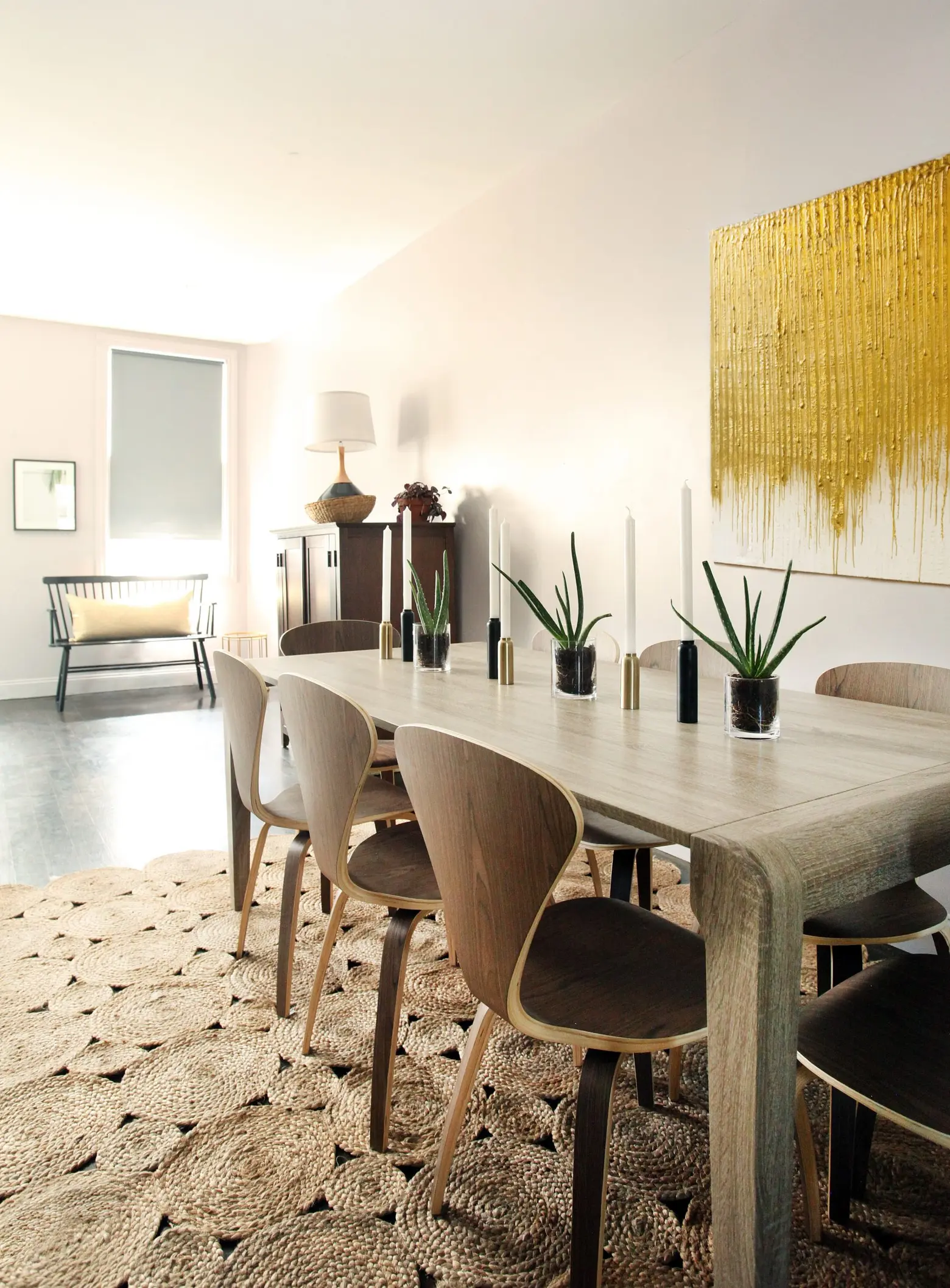
AphroChic started out as a blog but it is now much more—you now offer an entire range of products and services. Can you tell us more about these offerings?
Jeanine: We started the blog in 2007 but by 2009, we had released our first line of products. AphroChic has always been about the intersection between modern design, culture, and representation, especially as African Americans in the world of design where we don’t always see many people like ourselves being represented. That’s where the product line came from as well. We were looking for products that really reflected an African American heritage at home, and we could not find them, so we started a line of pillows that were our first foray into product design. Living in San Francisco at the time, we were able to work with digital processes and sustainable design process from the onset. We were proud to be active at the beginning of the digital printing of fabrics.
Then, in 2010, we expanded that product line to wallpaper and now we have fabrics, and last year we launched a paint collection inspired by our current home in Brooklyn. Again, those products are sustainable and healthy for people who have allergies—this has always been a part of our product development process—this is why we always use water-based inks and eco-friendly materials. Since the launch of our book, the interior design side of the business has also expanded. We launched our book in 2013 and during our tour, we partnered with Room & Board. We were invited in to restyle seven Room & Board stores around the country. After that, we started to get approached by more brands to do similar work. We have also done pop ups and worked with other established brands like Ikea. We now have a mix of commercial partners and residential clients here in New York and in LA.
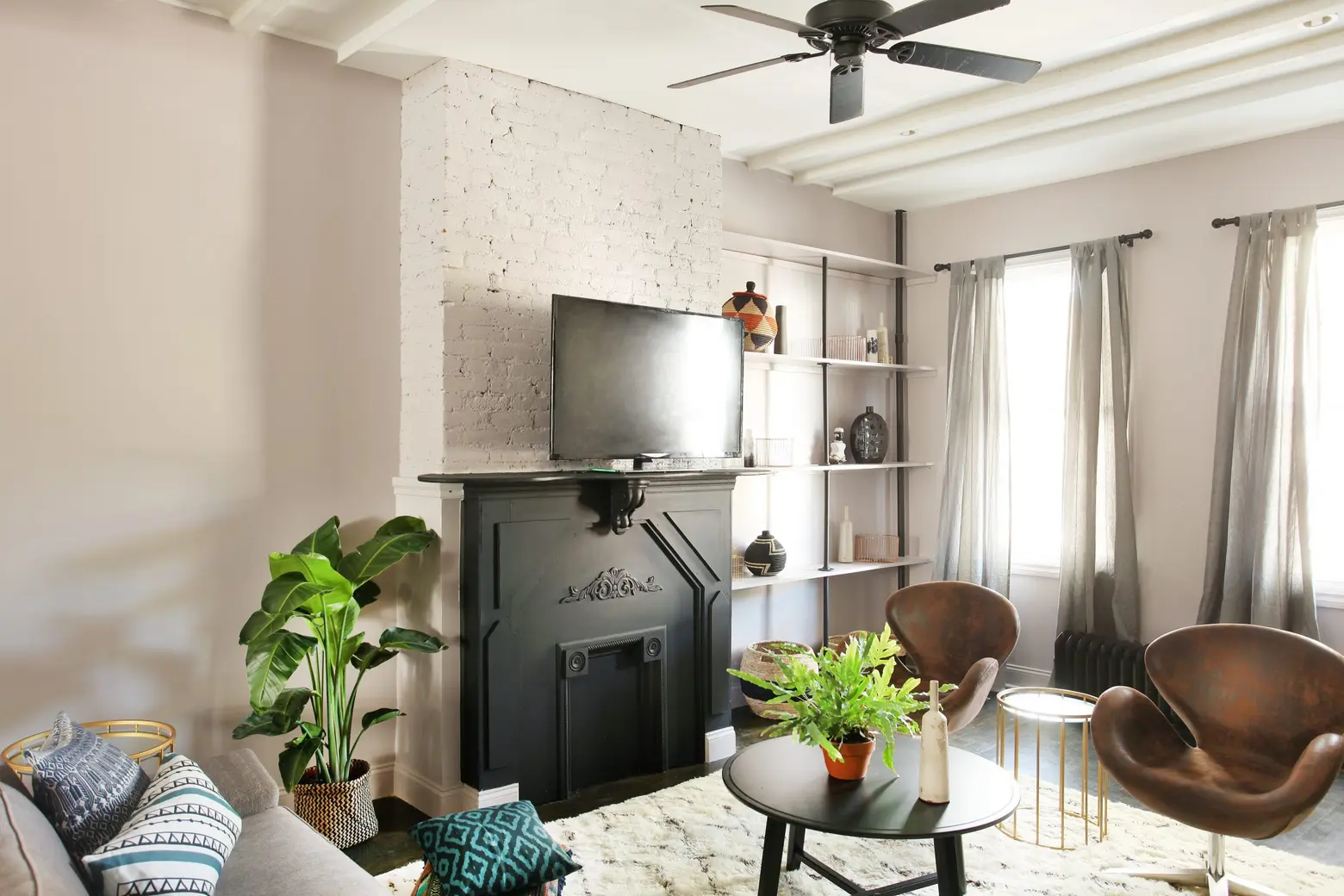
Can you talk more about how politics meets design in your company and about how you understand or envision African American design?
Bryan: With regards to African American design, there is a specific kind of tradition that we come out of. There is a certain embrace of color and certain textures and patterns that one finds looking back. One of the things we have enjoyed doing is asserting the idea of an African American design. We wanted to explore what is a specifically African American perspective on design. There was previously a focus on Pan-African design, where you see a lot of things like kente cloth. This was very prevalent in the 1990s, but we were specifically interested in exploring African American design. We realized that this couldn’t be a singular look—it has never been just one style—we had to approach design in a way that would enable different people to tell different stories through their home whether it is where you are from or where you want to go or family members and places you miss.
So, what we did in the book was take the basic elements of design and show how each one could be used to carry forward a cultural and emotional weight. By the time that was done, you had a system in which you could really put any global culture into any modern mode in a way that would continue to be accurate and useful whatever happens in modern design moving forward. Being able to do that—to facilitate that level of personal initiative and improvisation in the creating of a space, the telling of a story—is a lot of what African American design is all about. It is very heterogeneous, so a single look could just never capture the whole experience.
Jeanine: As Bryan said, this started with us thinking about and remembering our own history and heritage, how we grew up, our grandparents’ homes and the homes we grew up in. That’s how we broke down the book. We found that the things that were really important for our families as African Americans—certain colors, patterns, and objects, including objects connected to African American heritage and objects from around the world—were also important more broadly. Also, art is a huge part of any Black home we’ve ever gone into whether it’s in New York or Philadelphia or California.
But in terms of Black representation in the field of interior design, there are a lot of people of color in the field of interior design, but they don’t always get featured Elle Décor or the New York Times. I think this has a lot to do with writers and who is in their circle. We all go to people we know, but that can limit the diversity of what is represented. I am always telling people to open their circles up and talk to people from different backgrounds. This is easy in New York, especially here in Brooklyn.
Bryan: That was one of the initial ideas behind the AphroChic blog. We wanted to showcase people of color in the design field and the type of work that is out there because there is a perception that it’s mostly a white field, but the problem is not one of population but rather one of representation. There are many people of color in the design field, but the real issue is whether their work is being seen and featured and whether their accomplishments are being celebrated. That’s what our platform has been doing since the beginning.
With regards to our own journey into design and the process of bringing culture into a modern space, because we work in terms of narrative spaces—creating spaces that tell people’s personal stories—we have been approached by a number of brands who not only want their story told but told in a unique way. We worked with Home Depot, for example, for the Essence Street Style Festival. They wanted to be seen as a high-end design company. That is not how one would normally see the company, but they actually do have a good selection of items, so we worked with them to create a walk-in closet with amazing cultural style. For us, it was about being able to take what they had to tell their story in a different way.
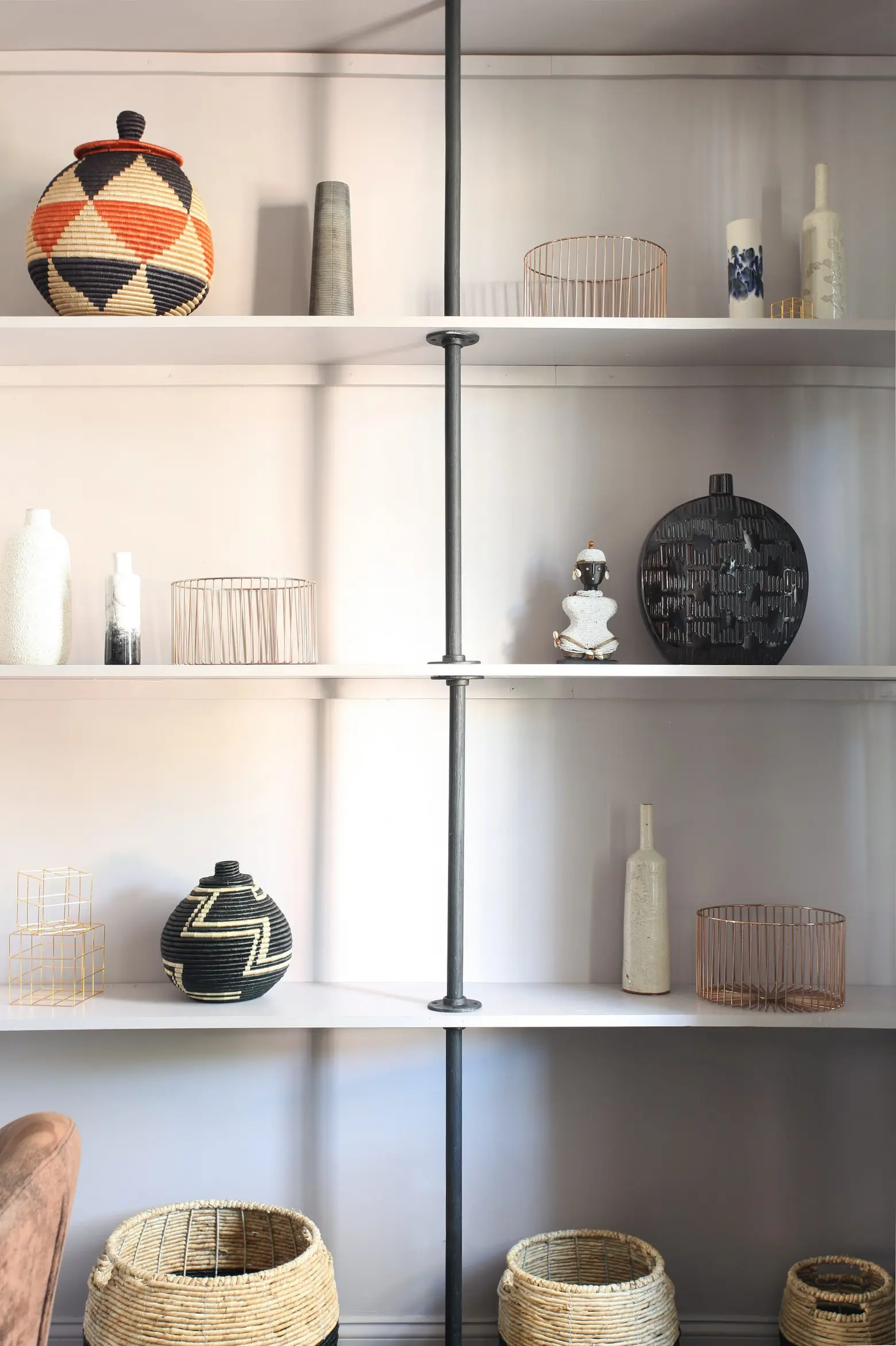
One final question—what are you currently working on and excited to share?
Jeanine: One thing we’re currently doing is expanding our home collection. We have always had a vision to bring more products to our clients. We are currently launching a new line of rugs. There is also our lighting collection and for that, we’re working with artisans in Morocco to create beautiful handmade lighting fixtures. We’re also bringing back our wallpaper collection. This time we are doing a line of wallpaper that is temporary but that still uses water-dyes and woven cloth that is environmentally friendly. We love being creative and bringing new products to clients so we’re excited about these new lines.
Bryan: We also love designing spaces. We’ve done some commercial staging for real estate, but we’re currently expanding that part of our business. In Los Angeles, we recently staged a 3000-square-foot warehouse. But we do a lot of different things ranging from our product line to design to events. We also produce a program for HGTV’s Facebook Channel, which brings viewers into different spaces. We do all this work as part of AphroChic.
+++
All photos of Bed-Stuy project © AphroChic/Patrick Cline.
